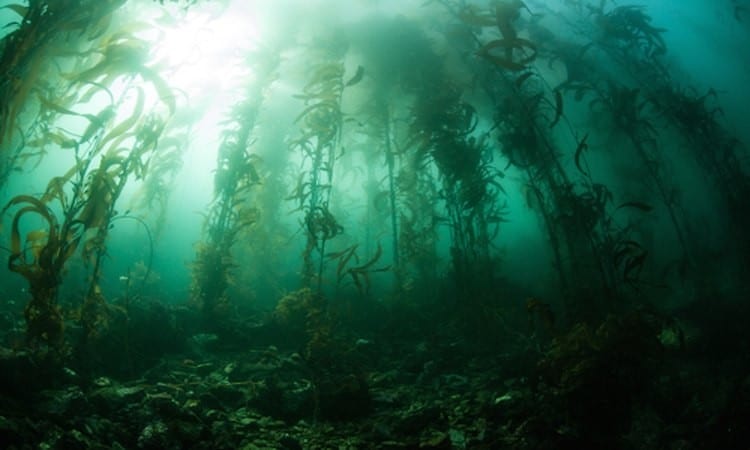Off the coast of Long Island Sound, a team of innovative sea farmers maintains a 40-acre farm, the Thimble Island Oyster Co., that isdedicated toward 3D ocean gardening. The organization’s founder, Bren Smith, labels this style of aquaculture “3D” because of the unique underwater patterns made up by the numerous marine organisms. Stretching out vertically as well as with length and width, a 3D shape emerges from the sea floor to the surface. By layering numerous flora and fauna including mussels, clams, kelp, and scallops in this underwater garden, Smith creates an aquatic biome that can revolutionize the fishing industry. According to Smith, 3D farming “turns a barren patch of ocean into a thriving ecosystem” that not only provides low to no-input food but also restores the ocean, mitigates climate change, and can sustainably transform fishing communities.
The underwater garden consists of six different species of shellfish and seaweed. At the top, floating ropes support rows of kelp, a carbon capturing seaweed that absorbs more than five times the amount of carbon than the average land-based plant. Mingled between kelp ropes are mussel and scallop nets that attract numerous species of underwater wildlife. Below these nets lay oyster and clam cages. Shellfish provide a favorable habitat for juvenile fish and crabs. They are also filter feeders, which have a purifying effect on the ocean water by reducing nitrification, increasing oxygen levels, and filtering out pollution. According to Smith, ocean farming makes it possible to raise seafood in a sustainable way that increases the productivity of the ocean instead of depleting its resources.
Education, outreach, and community building are the other sides to Thimble Island’s ocean gardening endeavor. Backed by the University of Connecticut and Yale’s Sustainable Food Project, Thimble Island sponsors a “floating classroom” that combines ecology, food security, and economics in a forward-thinking approach to combating climate change and supporting a green ocean economy. Scholars are designing ways to utilize ocean farming alongside wind farms and other types of sea infrastructure. They also deal with ocean acidification and habitat restoration. Most recently, a sea farm-to-table initiative illustrates how ocean farming reduces issues of food security.
Smith’s nonprofit, GreenWave, envisions a “blue-green economy” that encapsulates a network of scholars, farmers, and social entrepreneurs to extend these sustainable practices to the mainstream fishing community. Green Wave’s mission is to “support a new generation of ocean farmers and innovators” and to bring sustainable concepts to locals who are wishing to modernize. Members do this through training programs, community supported farms, and outreach to low-income fishing communities.
Smith believes that 3D ocean farming can jump-start a new ocean economy that can meet the growing need for sustainable seafood.







